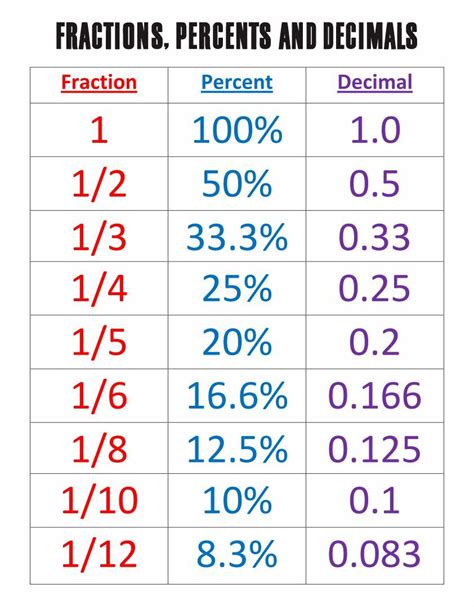265 Out Of 300 As A Percentage
Kalali
Apr 04, 2025 · 4 min read

Table of Contents
265 out of 300 as a Percentage: A Comprehensive Guide
Calculating percentages is a fundamental skill with applications across numerous fields, from academic assignments to financial analysis and everyday decision-making. Understanding how to express a portion of a whole as a percentage is crucial for interpreting data, making comparisons, and drawing informed conclusions. This article delves into the calculation of 265 out of 300 as a percentage, providing a detailed explanation, various methods, and practical applications.
Understanding Percentages
Before diving into the calculation, let's solidify our understanding of percentages. A percentage is a fraction or ratio expressed as a number out of 100. The symbol "%" represents "per cent," meaning "out of one hundred." For example, 50% means 50 out of 100, or 50/100, which simplifies to 1/2.
Calculating 265 out of 300 as a Percentage: The Basic Method
The most straightforward method to calculate 265 out of 300 as a percentage involves three simple steps:
-
Form a Fraction: Represent the given numbers as a fraction: 265/300. This fraction shows the part (265) compared to the whole (300).
-
Convert the Fraction to a Decimal: Divide the numerator (265) by the denominator (300): 265 ÷ 300 = 0.88333...
-
Convert the Decimal to a Percentage: Multiply the decimal by 100 and add the percentage symbol (%): 0.88333... × 100 = 88.33% (approximately). We round to two decimal places for practical purposes.
Therefore, 265 out of 300 is approximately 88.33%.
Alternative Methods for Calculation
While the basic method is clear and efficient, alternative methods can be helpful depending on the context and available tools.
Using Proportions
Proportions offer a different approach to solve percentage problems. We can set up a proportion:
265/300 = x/100
To solve for x (the percentage), we cross-multiply:
300x = 26500
x = 26500/300
x = 88.33 (approximately)
Therefore, x = 88.33%.
Using a Calculator
Most calculators have a percentage function that simplifies the calculation. Simply enter 265 ÷ 300 and then multiply by 100 to obtain the percentage directly. This method is particularly useful for larger numbers or when speed and accuracy are paramount.
Using Spreadsheet Software
Spreadsheet software like Microsoft Excel or Google Sheets offers built-in functions to calculate percentages. The formula =(265/300)*100 will directly give you the result: 88.33%. This is particularly convenient when dealing with numerous calculations within a larger dataset.
Practical Applications and Real-World Examples
The ability to calculate percentages like 265 out of 300 has numerous real-world applications across diverse fields:
-
Academic Performance: If a student answered 265 questions correctly out of 300 on an exam, their score is 88.33%. This allows for easy comparison with other students and assessment of performance.
-
Business and Finance: Businesses use percentage calculations extensively. For example, calculating sales growth, profit margins, and market share often involves determining a percentage increase or decrease. A company achieving 265 sales out of a target of 300 would have an 88.33% achievement rate.
-
Data Analysis: In research and data analysis, representing data as percentages facilitates easier interpretation and comparison. For example, if a survey of 300 people shows 265 supporting a particular policy, 88.33% support is a concise and easily understandable summary.
-
Sports Statistics: Many sports statistics are expressed as percentages. A basketball player making 265 out of 300 free throws has an 88.33% free-throw percentage.
-
Everyday Life: Percentages are used in everyday life for calculating discounts, tips, taxes, and more. Understanding percentage calculations is crucial for making informed financial decisions.
Beyond the Calculation: Interpreting the Result
While the calculation of 265 out of 300 as 88.33% is straightforward, the true value lies in understanding the implications of this result. This percentage represents a high level of achievement or success, indicating a strong performance. However, the context is crucial. A high percentage in one situation might be considered average or even low in another. For instance, an 88.33% score on an exam might be excellent, while an 88.33% success rate in a medical procedure might be unacceptably low.
Improving Accuracy and Precision
The result of 88.33% is an approximation. The decimal representation of 265/300 is a repeating decimal (0.88333...). The level of precision required depends on the context. For many applications, two decimal places (88.33%) offer sufficient accuracy. However, in situations demanding greater precision, you might use more decimal places or represent the result as a fraction (265/300).
Conclusion: Mastering Percentage Calculations
Calculating percentages is a valuable skill with wide-ranging applications. The process of determining that 265 out of 300 represents approximately 88.33% is a simple yet powerful technique. Understanding the different methods, appreciating the context of the result, and striving for appropriate precision are essential for effectively using percentages in various situations. By mastering this fundamental mathematical concept, individuals and organizations can gain a clearer understanding of data, improve decision-making, and achieve greater success. Remember to always consider the context of the percentage to draw meaningful conclusions. A strong grasp of percentages empowers you to navigate a world filled with numerical data with confidence and insight.
Latest Posts
Latest Posts
-
Does A Triangle Have 3 Acute Angles
Apr 04, 2025
-
7 6 As A Mixed Number
Apr 04, 2025
-
How Many Light Years Is Earth From The Sun
Apr 04, 2025
-
Cuanto Es 40 Grados Fahrenheit A Centigrados
Apr 04, 2025
-
What Pattern Do You Notice When You Are Squaring Numbers
Apr 04, 2025
Related Post
Thank you for visiting our website which covers about 265 Out Of 300 As A Percentage . We hope the information provided has been useful to you. Feel free to contact us if you have any questions or need further assistance. See you next time and don't miss to bookmark.
